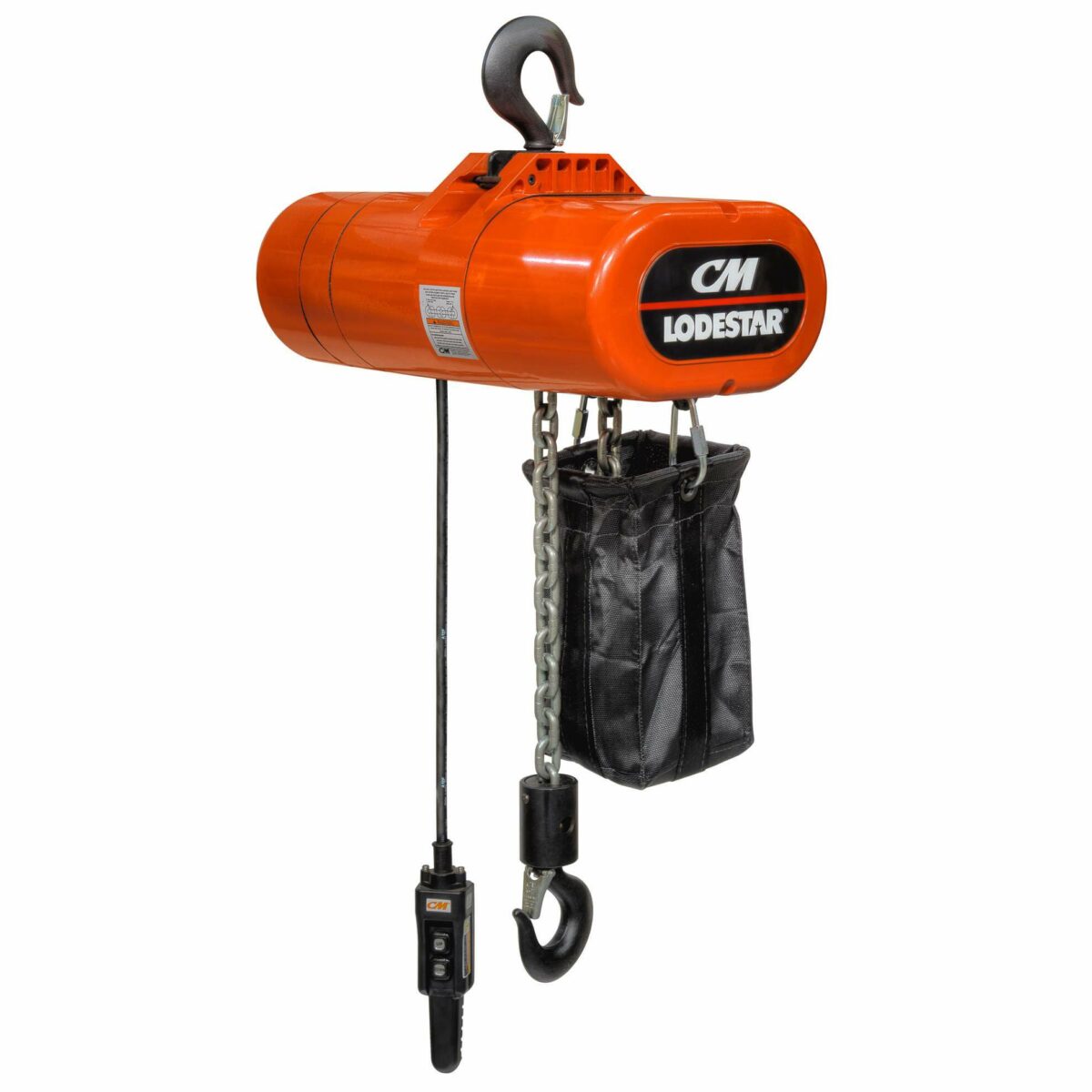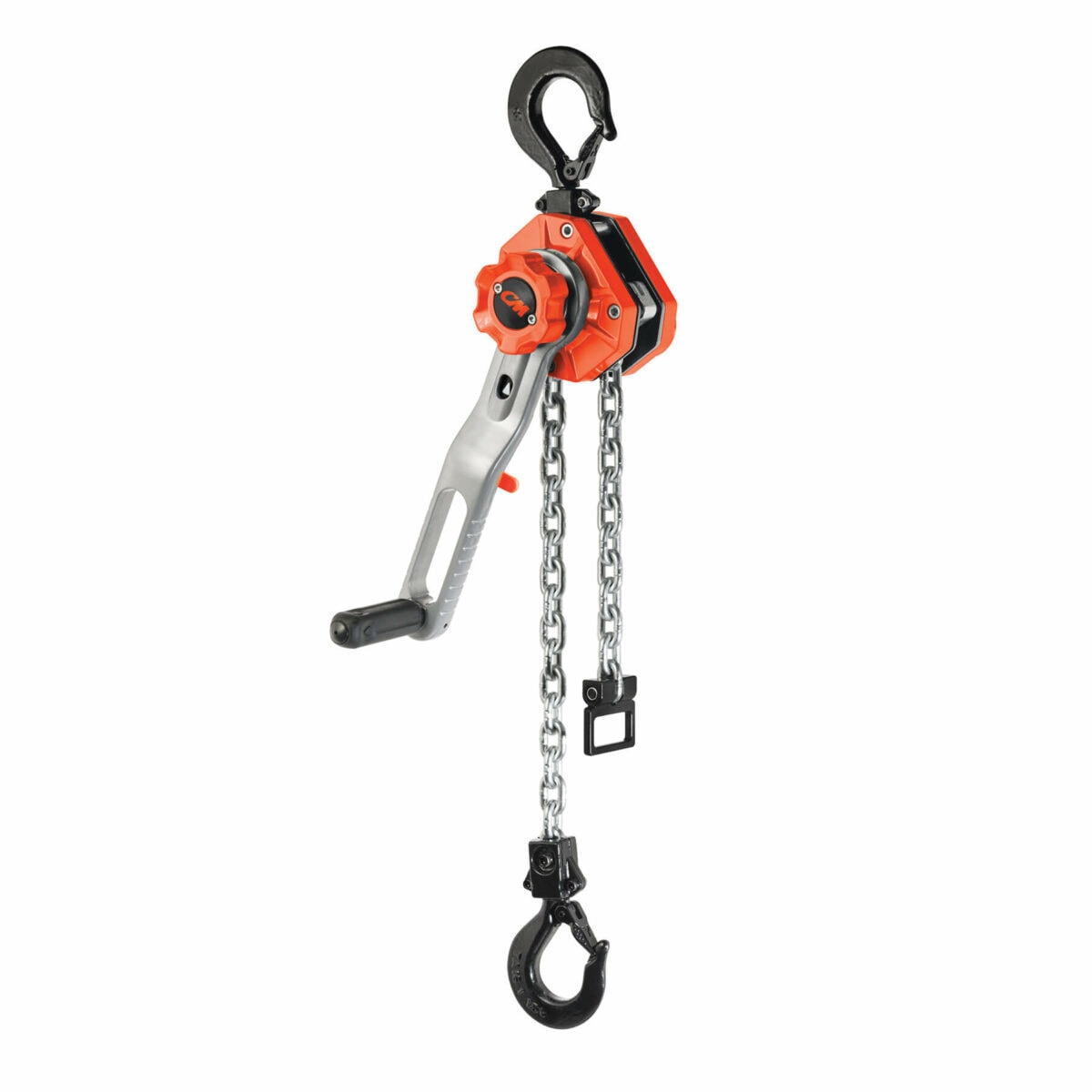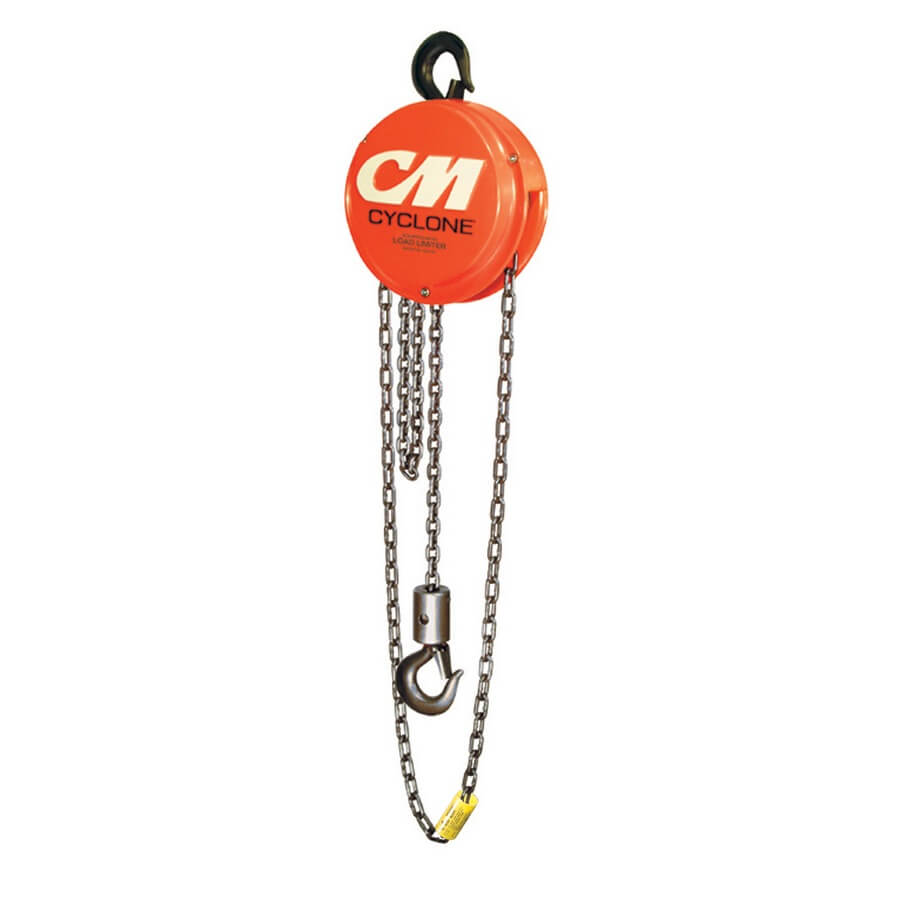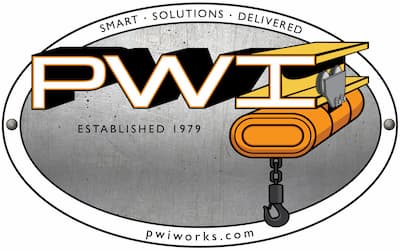Electric chain hoist, hand hoist, or lever hoist? These systems may all seem very similar but how does each one work and what are the specific benefits of each system?
When it comes to chain hoists, there are a number of different options to choose from. Whether it is a manual hand chain hoist, lever hoist, or electric chain hoist, each system has its own advantages and disadvantages.
Do Powered Chain Hoists Work the Same as Manual Chain Hoists?
The main difference between the functionality of a powered chain hoist, compared with a manual chain hoist (other than the motor) is that the motor functions with the brake to ensure the load is held securely while lifting.
When the electric hoist is in operation, all of the power is used to drive the motor. But when the motor stops, the power supply automatically applies the brake. This removes the risk of human error and ensures safe hoist operation.
A manual chain hoist is commonly used in work areas where lifting large loads is not frequent. While these hoists are very cost effective, the process is very slow and therefore not ideal for frequent use.
What’s Unique About How Electric Chain Hoists Work?

Electric chain hoists are operated using a pendant or radio control as opposed to the physical control of a manual chain hoist. This improves the ease of operation and reduces the chances of injury because the operator can stand away from the load while lifting it.
While there are different duty cycles, most electric motors are capable of operating at a high torque for around 30 minutes. It also implements an electric and mechanical braking system to hold the load in place.
For the majority of electric chain hoists, customers can choose single-speed, dual-speed, or variable speed options. While single-speed is more commonly used, dual-speed and variable speed hoists are better when there is a need for more precise movement and maneuvering of loads.
Electric chain hoists are also able to incorporate smart technologies that improve operation, such as systems that automatically adjust lifting speed to reduce lateral load movement.
This also means more safety features and sensors to prevent overloading the hoist.
How Does a Lever Chain Hoist Work?

A lever chain hoist is the lowest profile and arguably the cheapest hoist solution available. It is a simple system made up of a geared ratchet that is operated by a hand-sized ergonomic lever.
The ratchet will commonly have three positions:
- “Up” to raise the load
- “Down” to lower the load
- “Neutral” to allow for free-chaining.
Free-chaining disengages the ratchet mechanism from the chain so that you can manually reduce or increase the chain length. This is usually for the process of attaching or removing the load from the hook because it allows you to take up or reduce slack in the chain.
Most lever systems are designed to be incredibly simple to use with just one hand. They are generally used for smaller loads but some models can lift up to 3 tons.
A lever hoist is ideal when you need it a portable solution – for example, to aid in installations on multiple sites. It’s an incredibly flexible and practical hoisting solution for low-use cases.
How Does a Hand Chain Hoist Work?

Otherwise known as a chain block, a hand chain hoist is driven by a manually-controlled chain loop that turns a chain wheel. This chain wheel is attached to a short driveshaft and gear system. It multiplies the input to drive a slow-moving high-torque gear for hoisting or lowering the load. This gear system also contains a brake pawl to prevent the load from slipping.
The gear system is designed to allow for minimal effort (input) from the operator, meaning that lifting loads are done more easily and with less strenuous input.
Each chain hoist will have a maximum load capacity that is directly related to the gearing used. What this means is that the input from the hoist operator stays the same, the load capacity increases, but the speed at which the load is hoisted or lowered reduces significantly.
Similar to lever chain hoists, hand chain hoists are also more affordable than electric chain hoists. This makes them a great option when there is a less frequent need for hoisting in a manufacturing, production, or more general work environment.
If your needing help deciding on the right type of hoist for you please contact one of our sales experts who would be happy to help you source the right hoist for your application!


![New Construction vs Mezzanine [PDF]](https://pwiworks.com/wp-content/uploads/new-construction-vs-mezzanine-pdf-464x600.jpg)